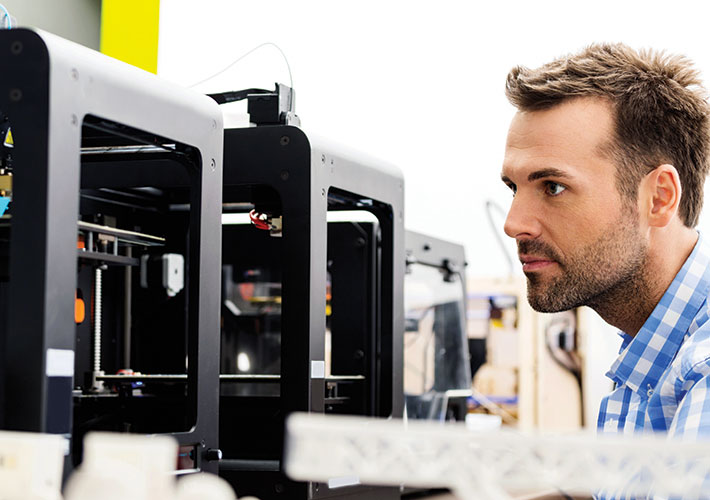
Making the Case for 3D Printing
According to consulting group Senvol, businesses considering using 3D printing must consider several factors before making the leap. Once the decision is made, ASTM standards work behind the scenes to help ensure success.
3D printing technology has been around for a while, and ASTM Committee F42 on Additive Manufacturing Technologies has been writing standards for the additive manufacturing industry since 2009. But the concept can still leave us shaking our heads in disbelief.
Consider some of the objects that have been or will soon be printed using additive manufacturing, or AM: musical instruments, consumer products, aircraft and automotive parts, and customized medical prosthetics and implants. There is even a plan to use 3D printing to build a small steel bridge in Amsterdam.
They say "if you can draw it, you can make it," and businesses all over the world are looking at 3D printing as a way to possibly minimize waste, improve inventory management through small-lot production, reduce manufacturing costs and increase speed-to-market.
"Should We Use AM?"
One company, Senvol, provides manufacturers with analyses of how, and whether, using additive manufacturing can accomplish these things.
Senvol co-founders Zach Simkin and Annie Wang, both ASTM members, have analyzed the potential benefits of additive manufacturing for a number of companies. Noting that "just because a part can be produced using AM does not necessarily mean that it should be," they urge companies to analyze their entire supply chain for several scenarios that may lend themselves to making the leap to AM.
These include whether a part is expensive to produce yet low volume, if it incurs high inventory costs, is sole-sourced and thereby subject to supply chain risk, or if it is subject to high import or export costs. "The parts that fall into one or more of these categories," Simkin says, "may be cost-effective for additive and may be worth taking a deeper look at."
Simkin and his company have analyzed the case for shifting to AM for several manufacturers. Two examples with very different outcomes are worth noting.
For Johnson Controls, Senvol took into account costs such as materials, AM machines and labor. It turned out that the company's injection-molded, polypropylene automotive part would become vastly more expensive were it manufactured using 3D printers.
For GE, the calculations were different. GE's smaller aluminum part usually required custom variations in design and quantity for different customers. Senvol's projections showed that the company could save nearly $100,000 per year by using AM and changing the material to a polymer that would still meet engineering specifications.
The Role of Standards
ASTM standards will continue to play a role in helping companies like Senvol, Johnson Controls, GE and countless others. Standards help innovation flourish as AM technologies continue to evolve and become less cost-prohibitive over time.
ASTM Committee F42 was established six years ago to "influence the application and adoption of additive technologies in the manufacturing of products across a wide range of global industries," according to Terry Wohlers, founder of the Wohlers Reports on the state of the AM industry.
The committee's standards undergird 3D printing technology by providing ways to report data on test specimens, evaluate mechanical properties of metals made using AM and standardize file formats. Several standards are specifications for metals made using the AM process of powder bed fusion.
Some of F42's standards have been adopted as joint ISO/ASTM standards under an agreement with the International Organization for Standardization.
Additive manufacturing technology is advancing rapidly, so whether or not your business should begin 3D printing will be influenced by several factors that will change over time. Whether or not the 3D printer works as you expect is influenced by ASTM standards.
 SN Home
SN Home Archive
Archive Advertisers
Advertisers Masthead
Masthead RateCard
RateCard Subscribe
Subscribe Email Editor
Email Editor